15 vertical gardens around the world
Categories: Design and Architecture
By Pictolic https://pictolic.com/article/15-vertical-gardens-around-the-world.htmlPatrick Blanc was born June 3, 1953 in Paris. He is a botanist and Creator of vertical gardens. Vertical gardens Blanca can be seen all over the world. He creates incredible works of living art for cities, public buildings, museums, hotels, restaurants, shopping centers and private houses. We offer to your attention some of his amazing masterpieces.
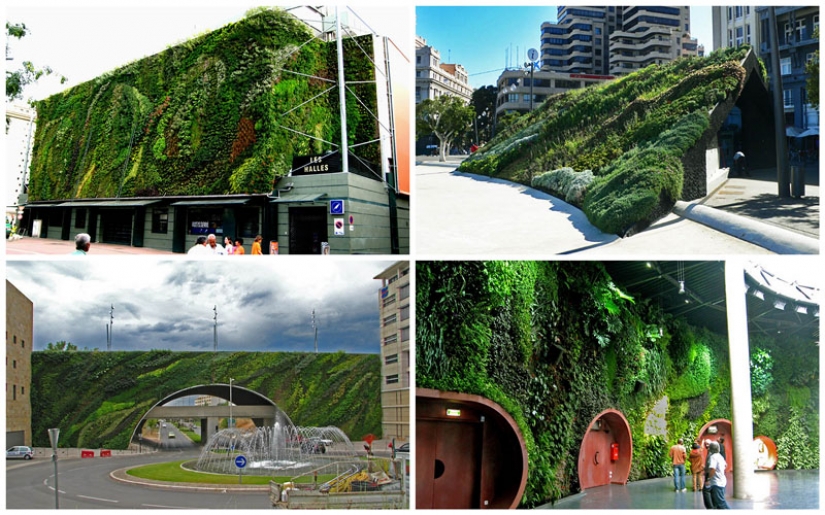
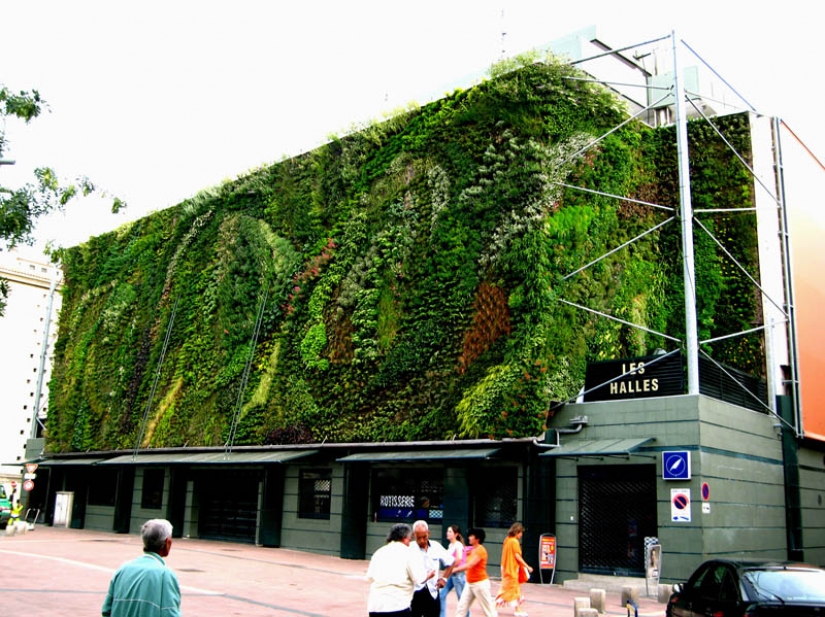
Halles Avignon, Provence, Cote d'azur. (PATRICK BLANC)
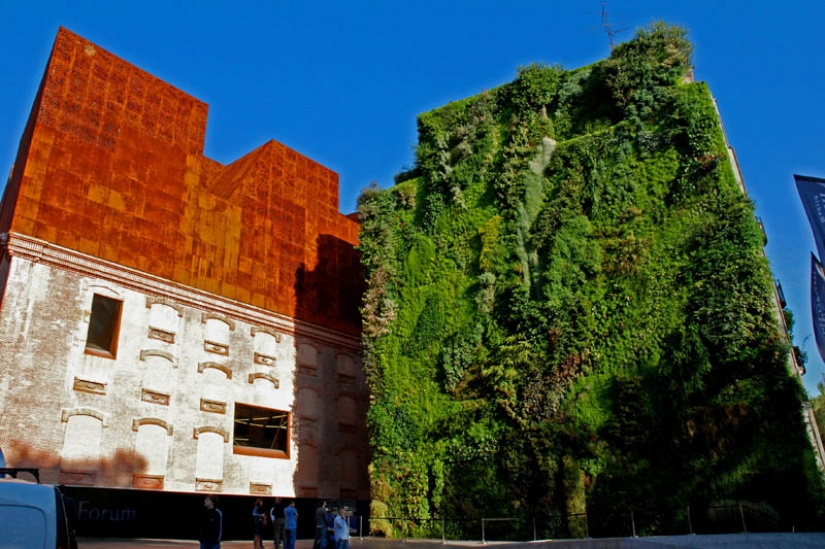
Review Patrick Dorada: "do plants need soil? Do not have. Soil – only mechanical support. Plants are important only water and minerals that are in this soil, as well as light and carbon dioxide for photosynthesis". On the photo: Caixa Forum, Madrid. (PATRICK BLANC)
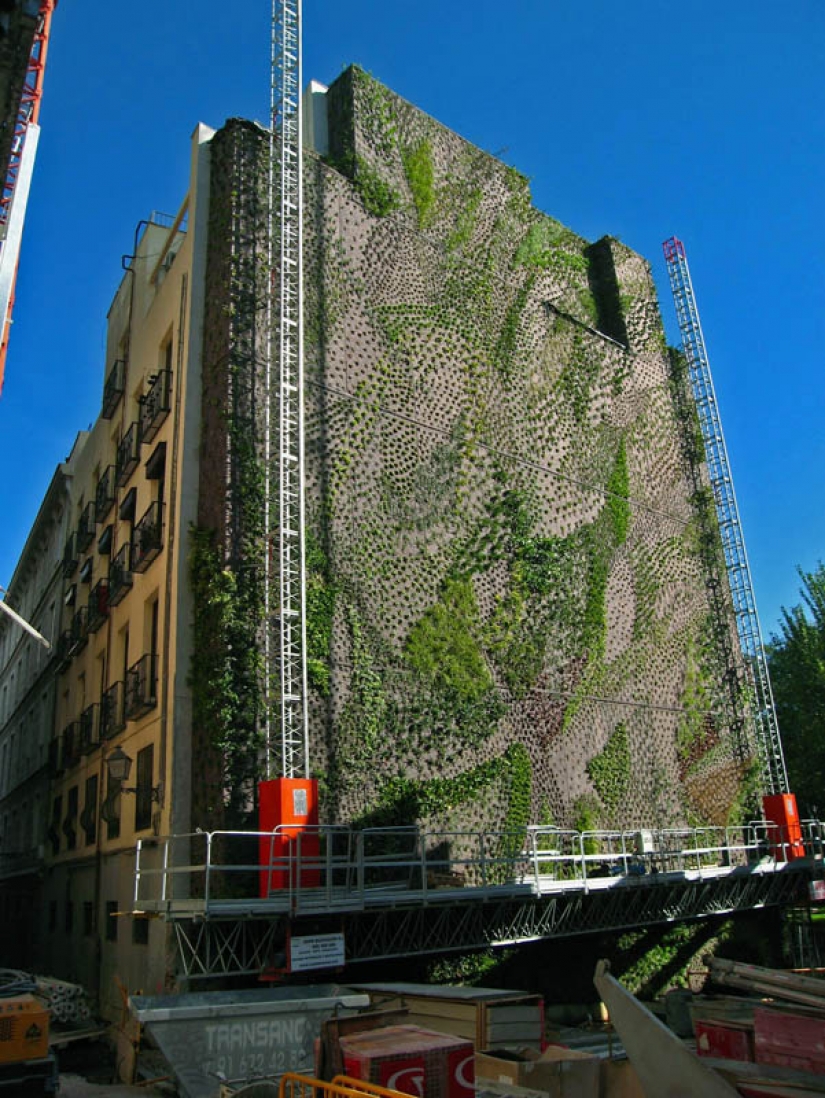
"Where there is water all year round, for example, in tropical forests or in temperate mountain forests, plants can grow on stones, trunks of trees and baseless slopes. In Malaysia, for example, of the 8,000 known plant species, about 2,500 are growing without soil." On the photo: Caixa Forum, Madrid. (PATRICK BLANC)
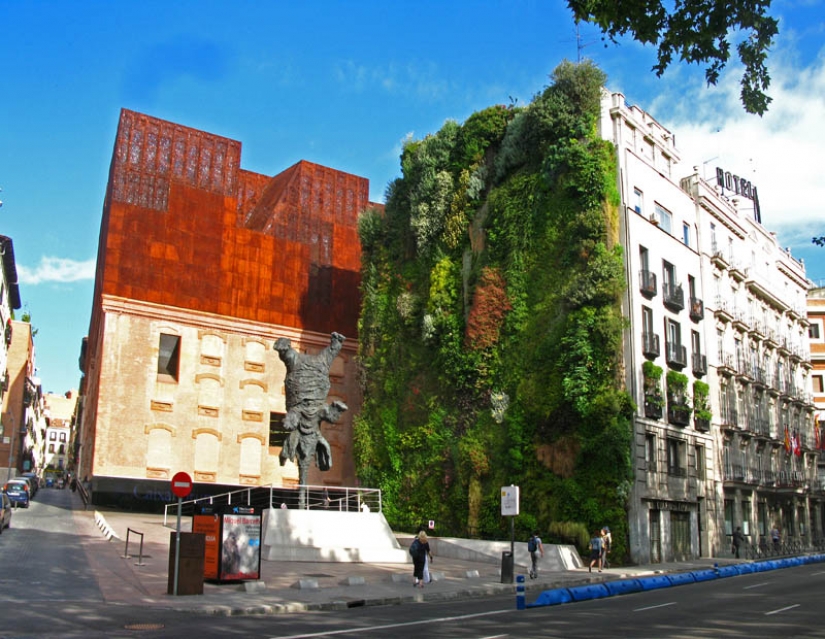
"Even in parts of the world with temperate climate, many plants grow on the rocks near the cave entrances, or fallen rocks. In such places grow many species of barberry, spirea and cotoneaster. Their curved nature of the branches say that they are descended from the steep nature of the biotopes and not from flat areas like the gardens where we usually grow them..." photo: Caixa Forum, Madrid. (PATRICK BLANC)
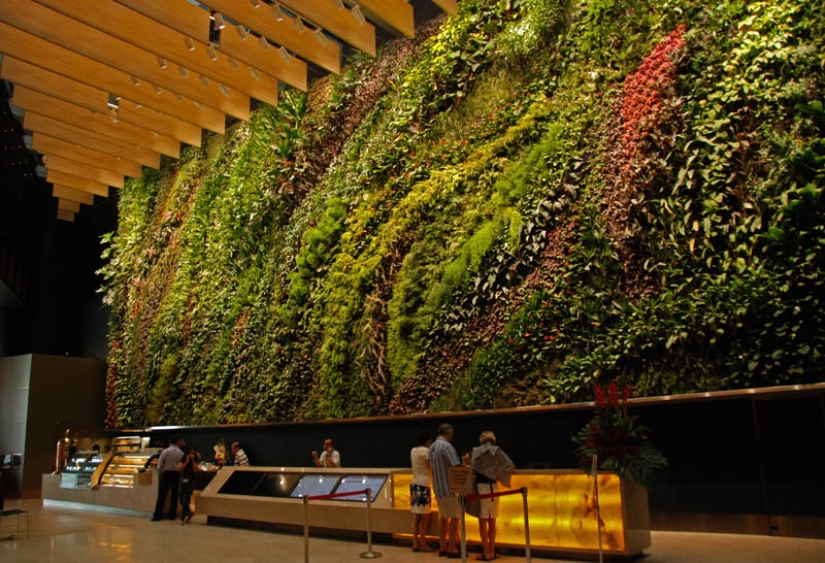
"Thus, plants can grow on almost soilless vertical surfaces, as long as they have access to water". On the photo: CapitaLand, Singapore. (PATRICK BLANC)
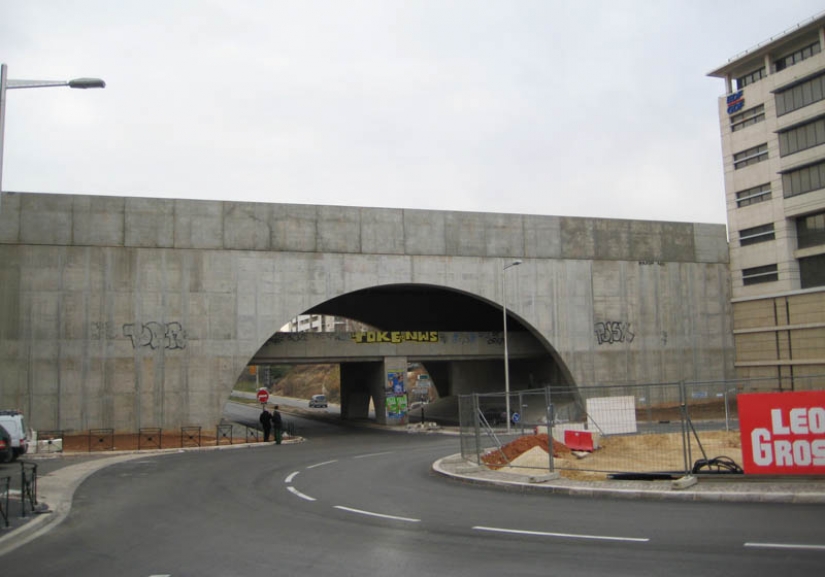
"If the roots can penetrate deep into the walls, they will mogut easy to damage it. This is what happened with the temples of Angkor". Photo: Pont Max Juvenal, Provence. Photo to... (PATRICK BLANC)
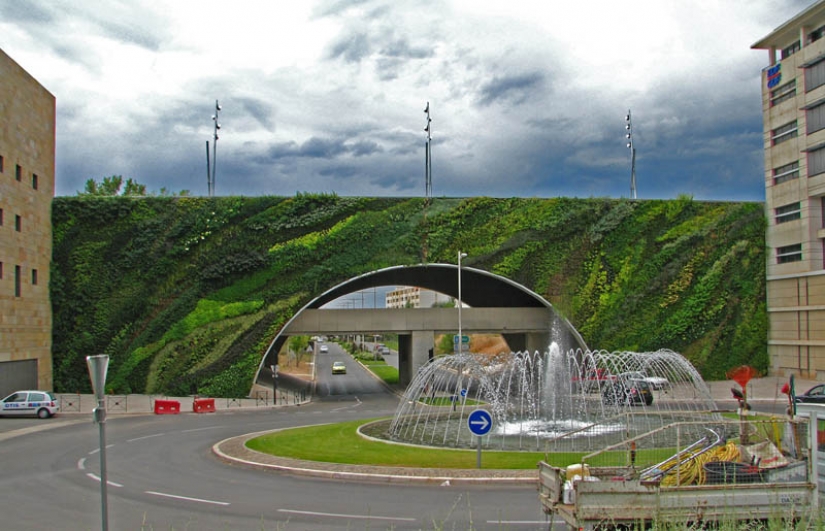
"But this can be prevented if the plants regularly to give water. Then the roots only spread over the surface, leaving the inner wall intact". Photo: Pont Max Juvenal, Provence. Picture after. (PATRICK BLANC)
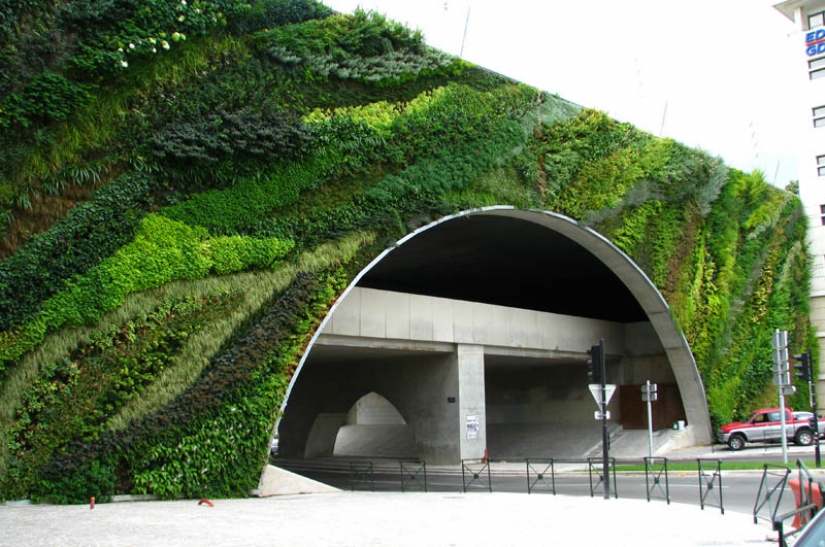
Based on these observations and decided to establish a permanent vegetative cover on the wall without much complications, Patrick Blanc came up with the idea of creating vertical gardens. Photo: Pont Max Juvenal, Provence. (PATRICK BLANC)
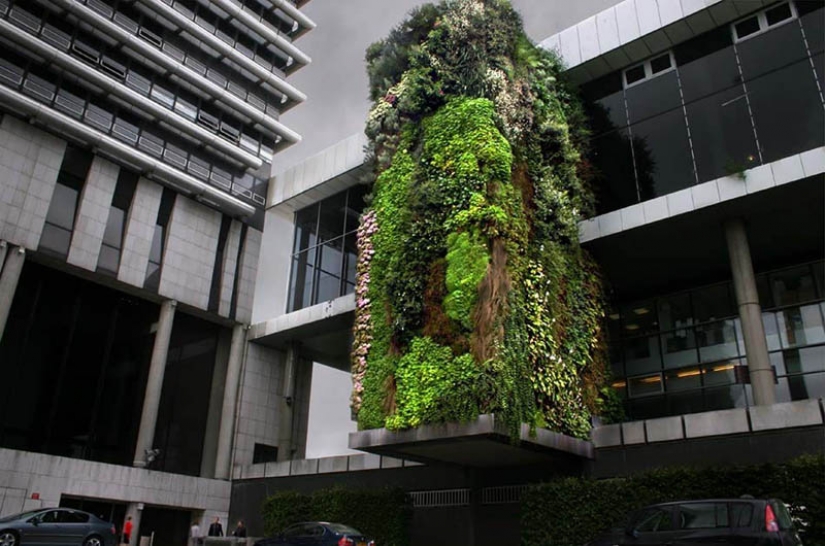
The main innovation is to use the ability of roots to grow not only on a volume (of soil, water, sand), but also on the surface. Without soil support system of the plants is very easy, but because it can be put on any wall, regardless of its size. Photo: the Hotel in Nanterre, France. (PATRICK BLANC)
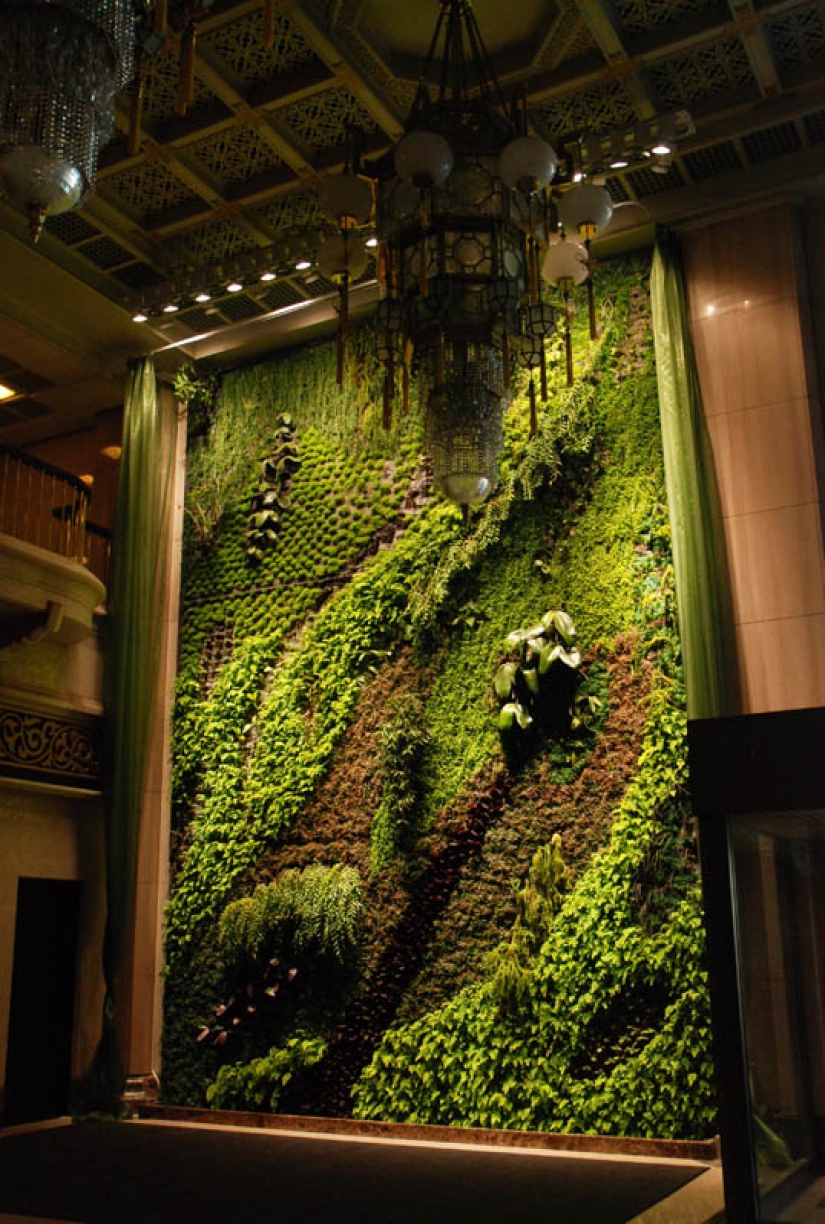
Vertical gardens can also be done inside the building. Then you need artificial lighting. They can even be done in an enclosed space where no natural light penetrates, for example in underground car parks. Photo: national theatre in Taipei. (PATRICK BLANC)
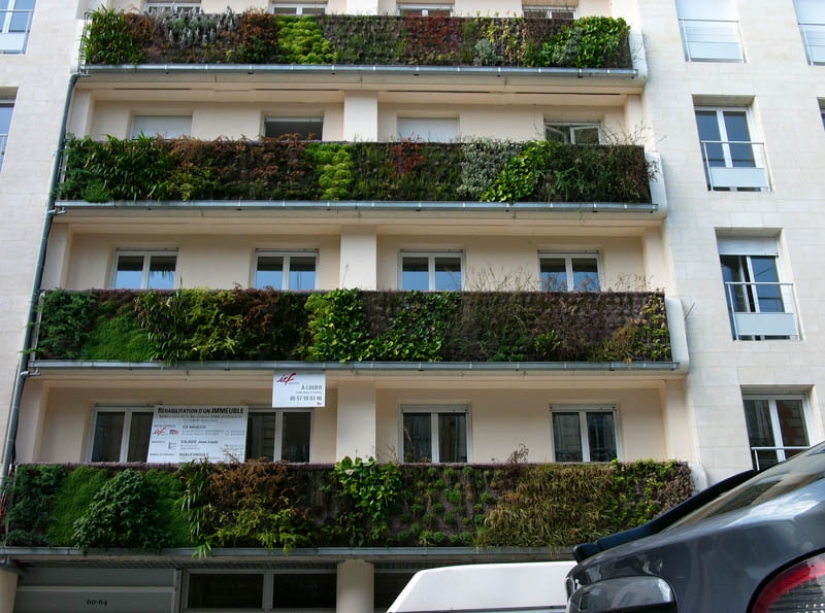
The choice of plant species depends on the prevailing climatic conditions. Photo: Immeuble ICF, Bordeaux. (PATRICK BLANC)
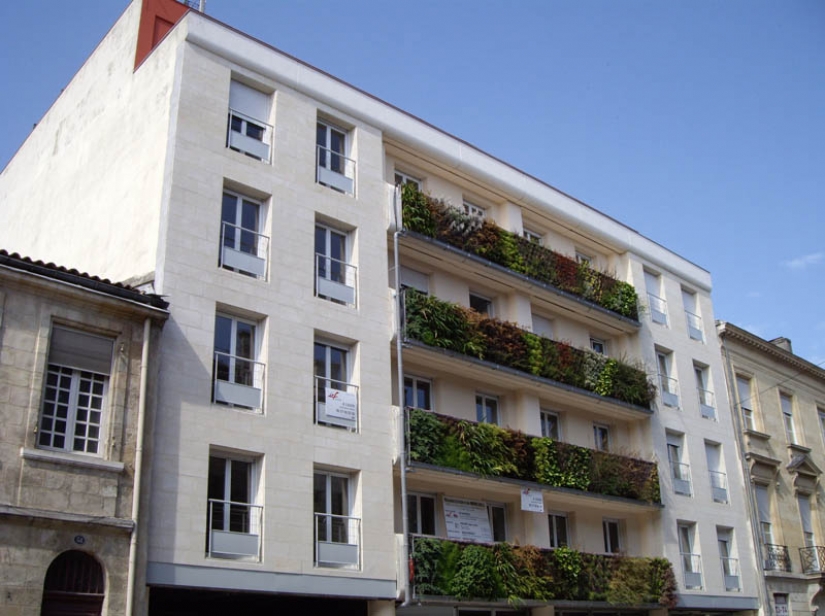
The vertical garden consists of three parts: a metal frame, the PVC layer and a layer of felt. The metal frame is hung on the wall or can stand her. It provides feed air and thus provide insulation of heat and sound. Photo: Immeuble ICF, Bordeaux. (PATRICK BLANC)
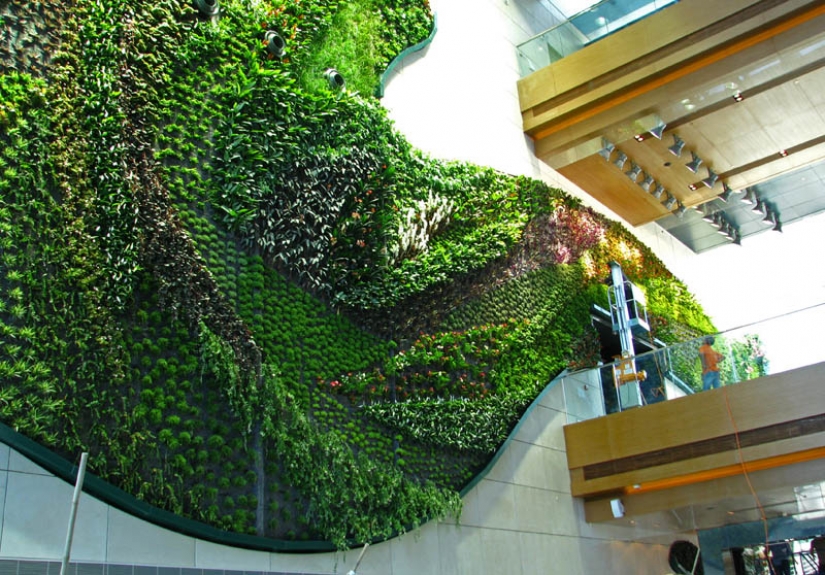
PVC layer of 1 cm is attached to the metal frame. This layer gives the fortress the entire structure, making it waterproof. To a layer of PVC is attached to the layer of felt made of polyamide. This felt does not rot, and its high capillarity allows you to evenly distribute the water. The roots grow on this layer. Photo: Hotel "Icon Hotel" in the Hong Kong Polytechnic University. (PATRICK BLANC)
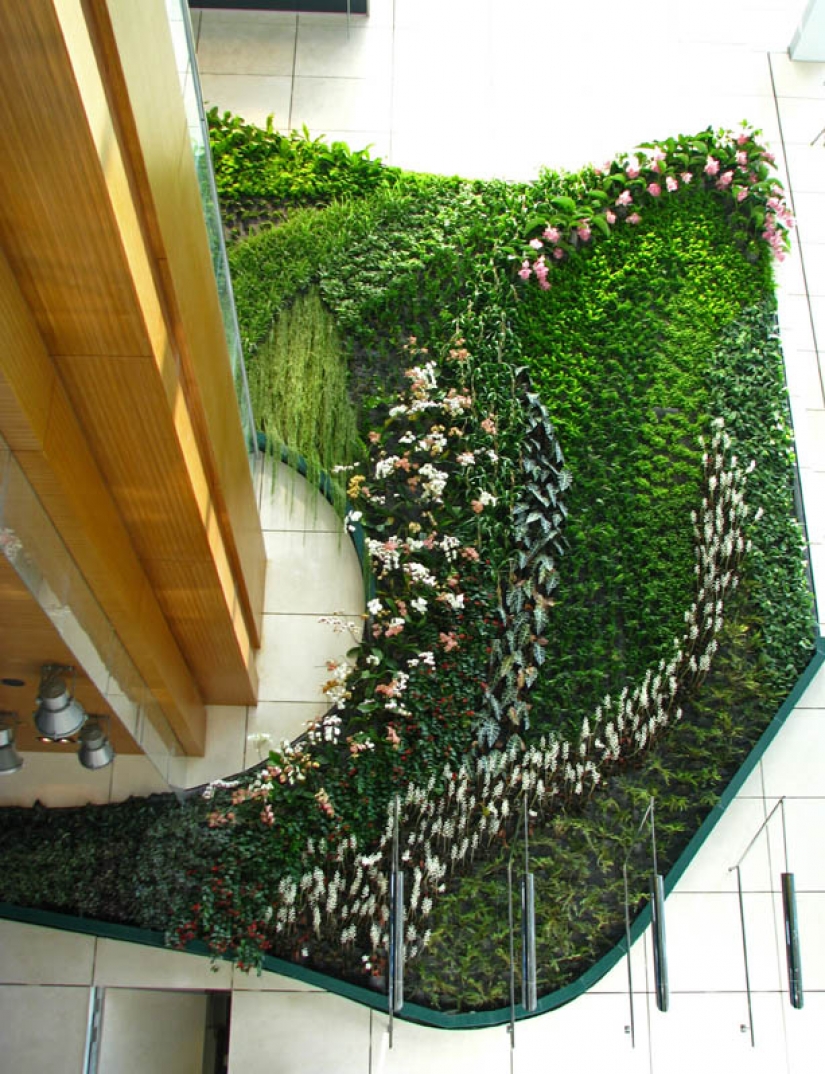
The plants are placed on this layer in the form of seeds, sprouts or already established plants. The density is about 30 plants per square meter. Photo: Hotel "Icon Hotel" in the Hong Kong Polytechnic University. (PATRICK BLANC)
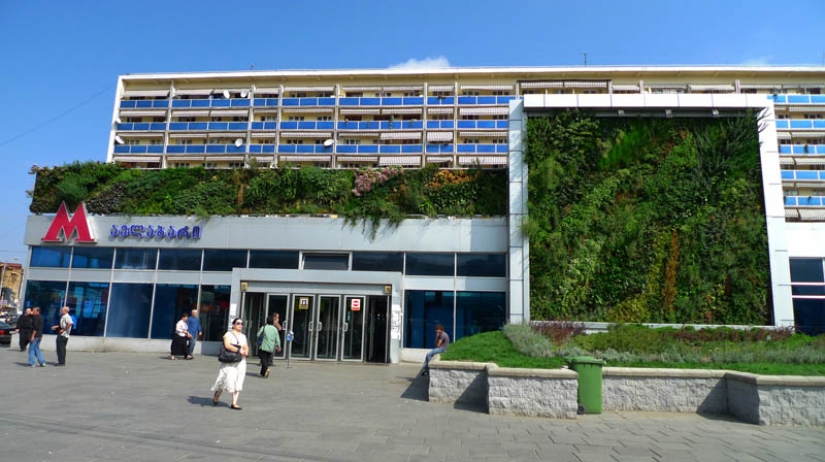
Pouring from the top. Water from under the crane it is necessary to provide nutrients. Watering and fertilization occurs automatically. Photo: the subway Station Avlabari, Tbilisi. (PATRICK BLANC)
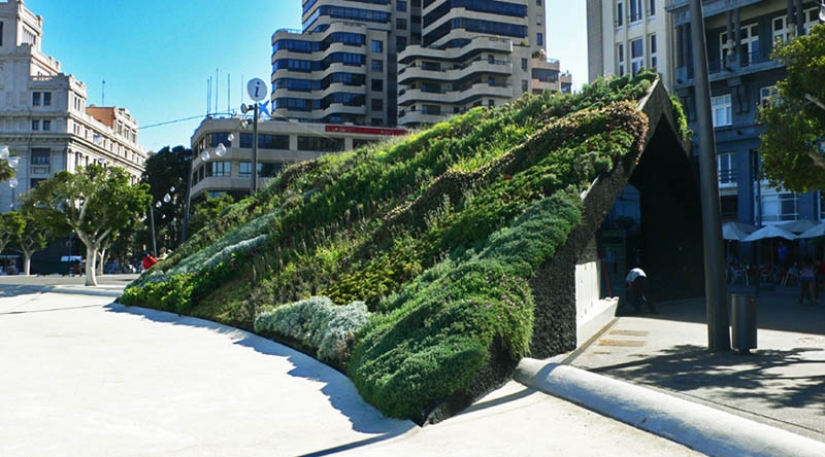
The total weight of the vertical garden, including plants and metal frame, less than 30 kg per square meter. So vertical gardens can be done on any wall without any size limitations or height. Photo: Plaza de españa, Santa Cruz de Tenerife, Spain. (PATRICK BLANC)
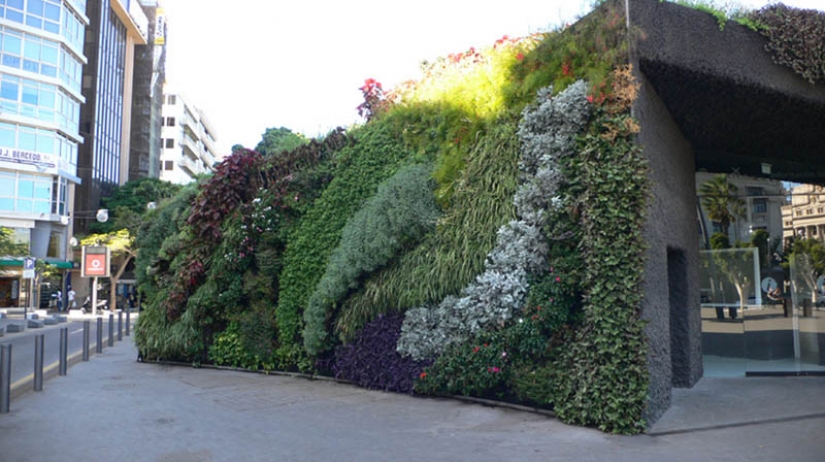
Vertical gardens allow people to recreate the live system, similar to the natural habitat. It is a way to bring nature back to where it once removed people. Thanks to Botanical knowledge, you can create almost natural masterpieces, despite the fact that they are made by human hands. Photo: Plaza de españa, Santa Cruz de Tenerife, Spain. (PATRICK BLANC)
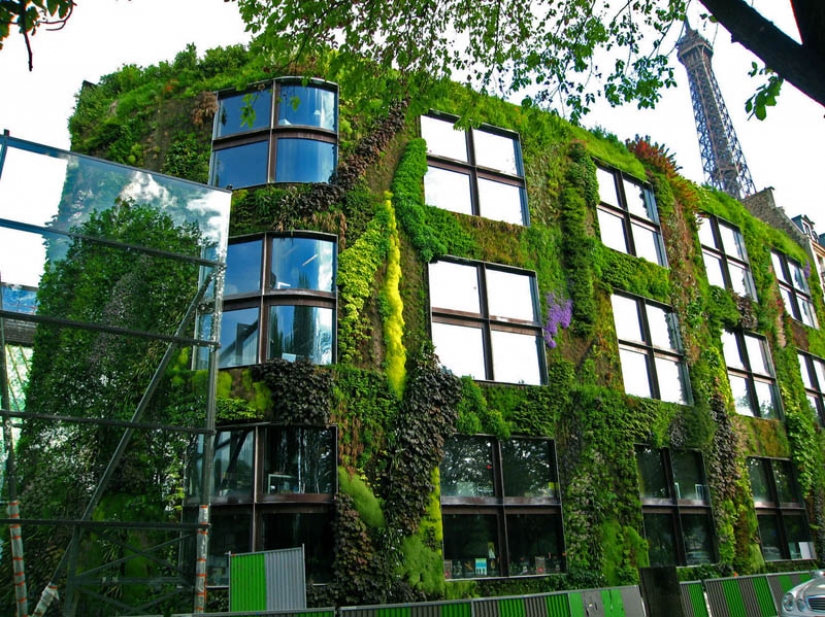
In cities around the world conventional bare wall can be turned into a real shelter of vegetation. This is a great way to add a bit of nature in zagnuvsheysya from the hustle and bustle of the city. Photo: the Museum Quai Branly, Paris. (PATRICK BLANC)
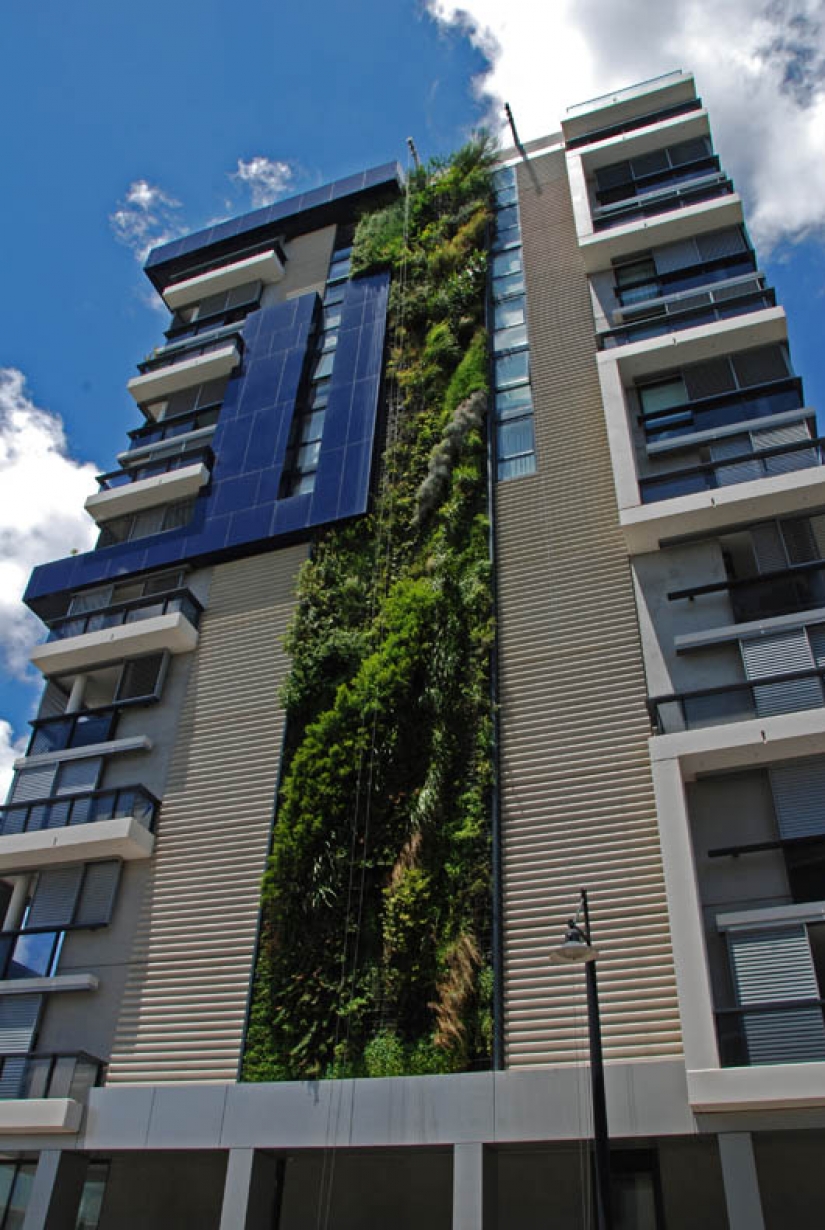
In addition, due to the effect of thermal insulation vertical gardens are very effective and help to reduce energy consumption, both in winter (by protecting the building from the cold) and in summer (by providing a natural cooling system). Photo: the Building of the "Trio Building" in Sydney. (PATRICK BLANC)
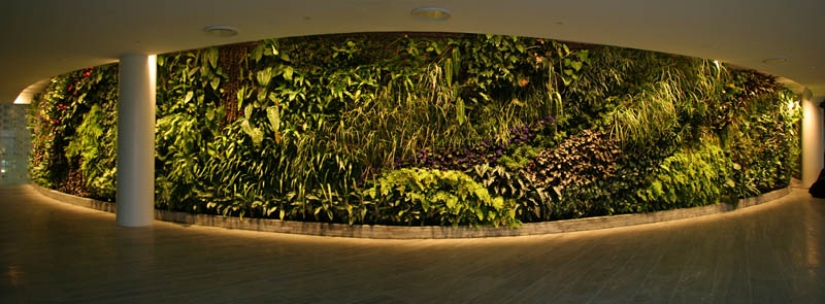
Vertical gardens are a great way to clear the air. On the photo: waiting Room, business class at Sydney airport. (PATRICK BLANC)
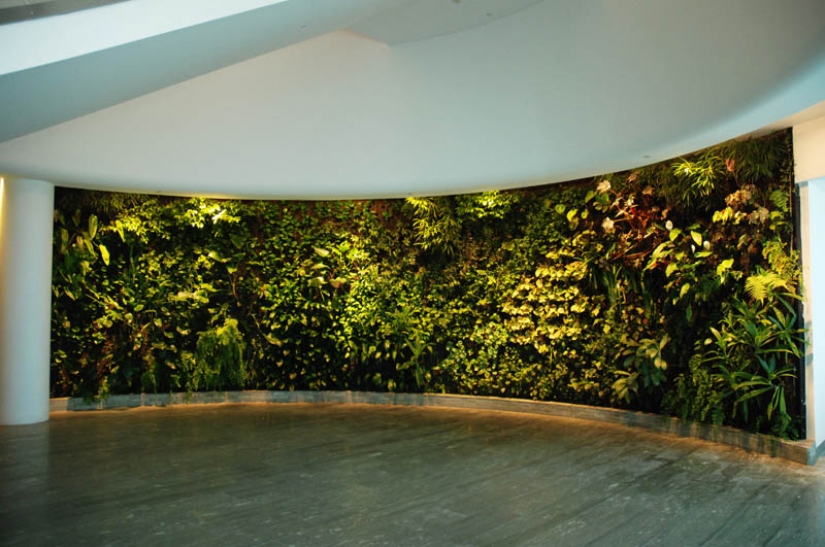
In addition to leaves and their well-known ability to improve the air, roots and all the microorganisms also serve a large surface area for air purification. On the photo: waiting Room, business class at Sydney airport. (PATRICK BLANC)
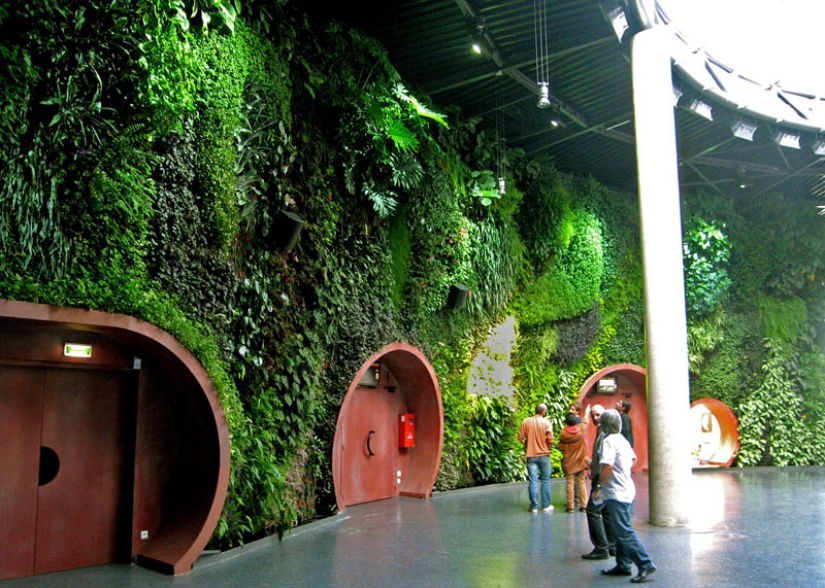
The felt pieces are taken from air and slowly decomposes and mineralizers, and then turn into fertilizer. On the photo: Toulouse, France. (PATRICK BLANC)
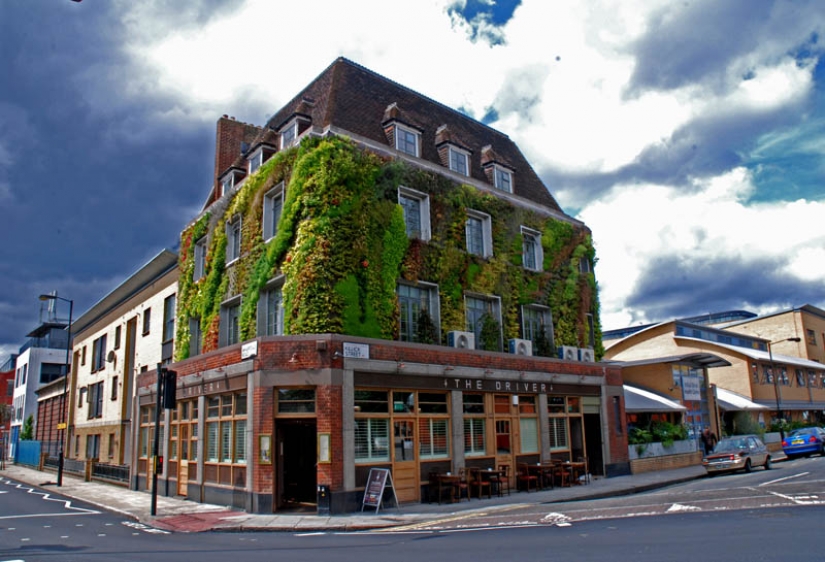
Thus, the vertical gardens is a great tool for the treatment of air and water where a flat surface is already exploited people. Photo: Pacha, London. (PATRICK BLANC)
Keywords: Building | Greens | Garden
Post News ArticleRecent articles

Jacques-Henri Lartigue (1894-1986) is perhaps the most famous "amateur" in the history of photography. The art world discovered his ...

It turns out that an active lifestyle is useful not only for the body but for the brain. Exercise strengthens muscles and spirit, ...
Related articles

When photographer Simon Dell saw a mouse running around his garden, he did not get a cat or prepare traps, and took tools and made ...

In order to build the home of your dreams, one idea is not enough. Most often the problem lies not in the concept and architecture ...

The magnificent house, which is called the "American Versailles", is located in Pennsylvania. The huge building with luxurious ...

Most major companies profanity is not encouraged. It is considered that the profanity — it is a sign of disrespect for ...